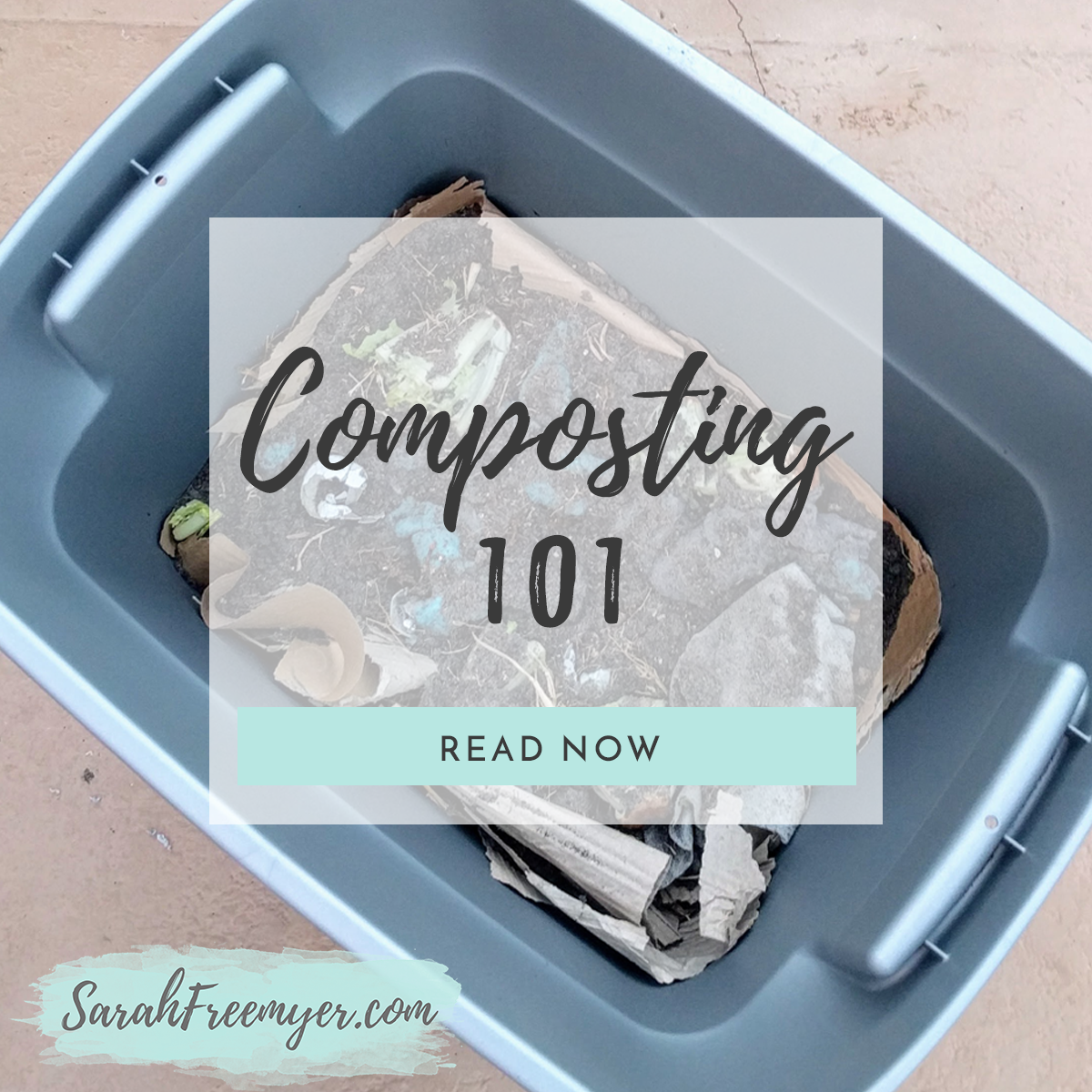Composting is a great way to recycle food and yard waste and turn it into fertilizer for your garden. I was really excited to start composting in our home and I’ve been very pleased with the process and the results. I feel gratified that a little less goes into our trashcan and as a reward I end up with some great, natural fertilizer. I want to give you a general overview of composting in the hope that you might decide to start doing it in your home too.
What is it?
Composting is the process that happens when microorganisms work to break down organic matter and turn it into nutrient-rich soil. By composting you can reduce your waste footprint and lessen the amount of food going to our landfills.
There are many different methods of composting but some of the most popular methods are vermicomposting, bokashi fermentation, and composting in a pile or bin outside. I keep my compost outside in a re-purposed bin though you may want to do some extra research to find the method that is right for you.
What can I compost?
The types of items you can compost are divided into two categories, greens and browns. Greens are fresh plant or food material and are high in nitrogen. Browns are dry plant material or paper and are high in carbon.
You can save food scraps in the kitchen when preparing meals and then take them outside to your compost bin or pile. You can also keep a small container in the kitchen to collect your food scraps in and then empty that container into your compost bin or pile every few days. For even longer storage, you can collect your food scraps in a container stored in your freezer. When maintaining your yard and garden, collect yard waste and add it directly to your compost bin or pile.

Variety is Key
All organic matter will break down eventually, but too much of any one material will slow down the composting process. It’s good to have a mix of both green and brown materials. When adding new material you should stir it in so that it is covered by a layer of the old material.
Mix it Up
If you are composting with a pile or in a bin, you should mix up the contents occasionally with a small shovel or cultivator tool. This will ensure that the pile gets oxygen and can break down evenly.
Keep it Moist
Compost needs some moisture to keep the process active, so don’t let it dry out completely. Also make sure that your compost isn’t too wet otherwise it will be soggy and start to smell bad. If your compost is too dry or too wet you can always add some water or more dry ingredients to balance it out.
When will it be done?
The composting process can take anywhere from a couple of months to a year for the different materials to fully break down. Completely decomposed material will look and smell like very dark soil. You don’t have to worry too much whether the compost is 100% done or not to start using it. You can plant in immature compost as long as you cover it with soil. Compost is ready to use once it no longer resembles the raw materials you had put into it.
Now what do I do with it?
You should use compost like you would with any fertilizer or potting soil. by adding it to your garden, potted plants, or your lawn. Some benefits of using compost are that it enhances the soil and helps it to retain nutrients, water and air. Compost also promotes beneficial bacteria which add nutrients to the soil.
Let’s get composting!

For more information visit:
US Environmental Protection Agency // Composting at Home

Wish I had a yard to compost in. Right now my garden is on the kitchen window sill. Good info in this post! Thank you.